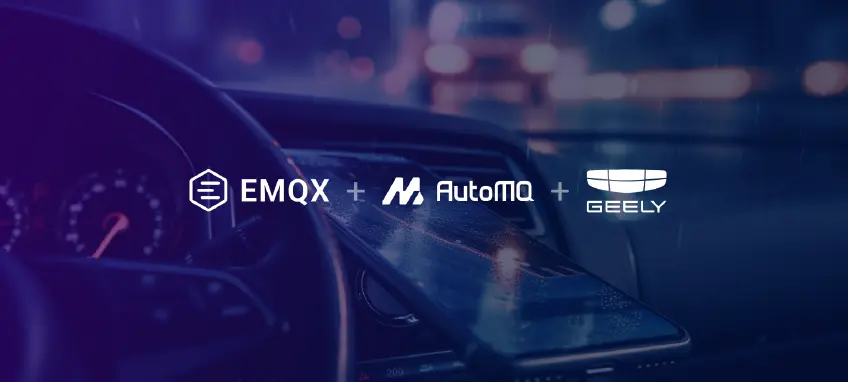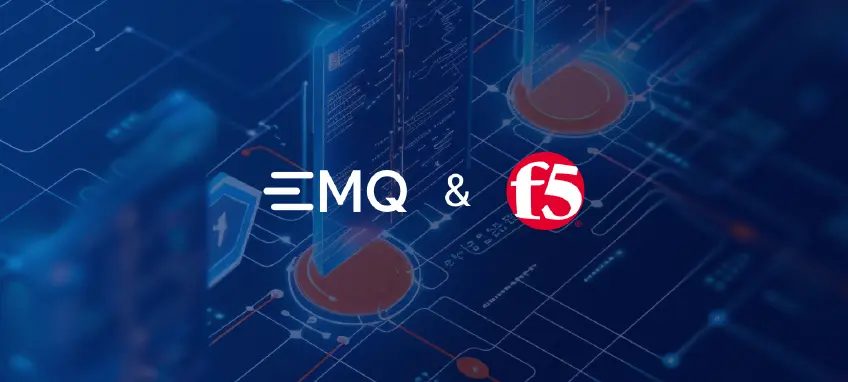 Enabling Intelligent UAV Connectivity with EMQX Cloud
Enabling Intelligent UAV Connectivity with EMQX CloudDiscover how EMQX Cloud enables secure, real-time, and scalable UAV operations with low-latency remote control, automated mission management, and global deployment.
 Enabling Intelligent UAV Connectivity with EMQX Cloud
Enabling Intelligent UAV Connectivity with EMQX CloudDiscover how EMQX Cloud enables secure, real-time, and scalable UAV operations with low-latency remote control, automated mission management, and global deployment.
 How EMQX Unified Namespace Powers AI Transformation in Automotive Manufacturing
How EMQX Unified Namespace Powers AI Transformation in Automotive ManufacturingDiscover how EMQX Unified Namespace empowers AI transformation in automotive manufacturing, enabling predictive maintenance, quality control, and human-robot collaboration across smart factories.
 Connecting 3D Printers to Cloud with MQTT and EMQX for Personal Manufacturing
Connecting 3D Printers to Cloud with MQTT and EMQX for Personal ManufacturingDiscover how MQTT and EMQX Cloud empower global 3D printer fleets with secure, real-time connectivity, enabling smart manufacturing and seamless data integration.
 Revolutionizing ESG and Carbon Footprint Reporting with a Unified Namespace
Revolutionizing ESG and Carbon Footprint Reporting with a Unified NamespaceDiscover how a global enterprise uses EMQX and NeuronEX to unify ESG and carbon data with a scalable, real-time UNS architecture.
 Diving into EMQX's UNS Solution for calculating OEE in Food Manufacturing through a Case Study
Diving into EMQX's UNS Solution for calculating OEE in Food Manufacturing through a Case StudyDiscover how EMQX's Unified Namespace (UNS) and OEE solution empowers food and beverage manufacturers to boost efficiency, ensure quality, and drive digital transformation.
 EMQX + AutoMQ: The Hybrid Cloud Engine Behind Geely’s Connected Vehicle Innovation
EMQX + AutoMQ: The Hybrid Cloud Engine Behind Geely’s Connected Vehicle InnovationBy adopting the integrated EMQX and AutoMQ solution, Geely has successfully tackled the core technical challenges of building a scalable, future-ready connected vehicle platform
 Smart Water Plant: IoT and AI-Driven Efficiency for Modern Utilities
Smart Water Plant: IoT and AI-Driven Efficiency for Modern UtilitiesEMQX's high-performance MQTT platform delivers real-time water data processing (100K msgs/sec, <100ms latency), boosting efficiency by 40%.
 EMQ & F5: A Robust Solution for Secure IoT Data Access at Scale
EMQ & F5: A Robust Solution for Secure IoT Data Access at ScaleThe joint solution from EMQ and F5 combines EMQX Platform's high-concurrency IoT access capabilities with F5’s leading load balancing and security technologies to deliver an integrated, scalable, high-performance data access solution for large-scale smart IoT applications.
 EMQX-Driven Smart Hospitality&Tourism: Enhancing Efficiency and Personalization from Restaurants to Cruises
EMQX-Driven Smart Hospitality&Tourism: Enhancing Efficiency and Personalization from Restaurants to CruisesCurrently, in the smart tourism and hospitality industries, EMQ is serving numerous companies, including cruise lines, food-tech firms, and hotel technology companies around the world.